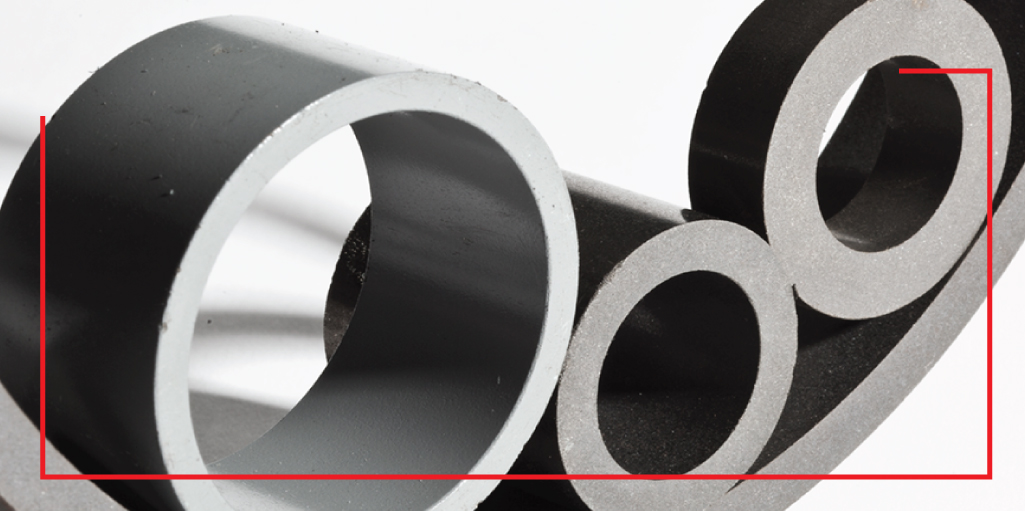In our previous blog, we provided a brief introduction to bonded magnets This blog will discuss the processing methods of bonded magnets: injection molding and compression bonding.
Bonded Magnets: The Injection Molding Method
Injection molding is a manufacturing process that you may already be familiar with if you have spent time in the plastics industry. During the process of injection molding, a molten, highly filled thermoplastic compound is injected into mold cavities. Then, it is allowed to solidify and cool into the desired shape. Injection molding is an excellent way to achieve high volume output and productivity due to the option of using multi-cavity tooling. It is possible to form magnets in complex shapes by using injection molding together with multicomponent assemblies by insert and over molding techniques. In injection molding, ferrite and neodymium iron boron powders are most commonly used as the magnetic powder in the compound.
Bonded Magnets: The Compression Bonding Method
In the compression bonding processing method, neodymium iron boron powder is processed through a powder refinement step as well as a liquid encapsulating process. During these steps, each particle of neodymium iron boron powder is coated with a thin film of thermoset epoxy and hardener, as well as other additives such as die wall lubricant. Then, the encapsulated powder is fed into a press cavity where it is compacted under pressures of about 6 tonnes/cm2. After this, the now compacted magnet is cured at temperatures of approximately 150-175 °C.
Compression bonding is an advantageous method of manufacturing for several reasons. First, compression bonding allows for magnetic loading to be as high as 85% by volume. This results in higher flux densities than calendared, injection molded, and extruded magnets. Compression bonded magnets have dimensional tolerances equivalent to injection molded products, which makes secondary operations generally unnecessary. Compression bonded neodymium iron boron magnets that possess both a maximum energy product of 10 MGOe or higher in addition to a net shape capability of arcs and cylinders are highly desirable. They have found numerous applications in brushless DC motors, as one example. Additionally, the capability to form long axial length, thin wall cylinders in combination with the relative ease of multipole magnetizing has resulted in compression bonded neodymium iron boron magnets being used in BLDC motor applications such as high volume HDD spindle motors, as one example.

